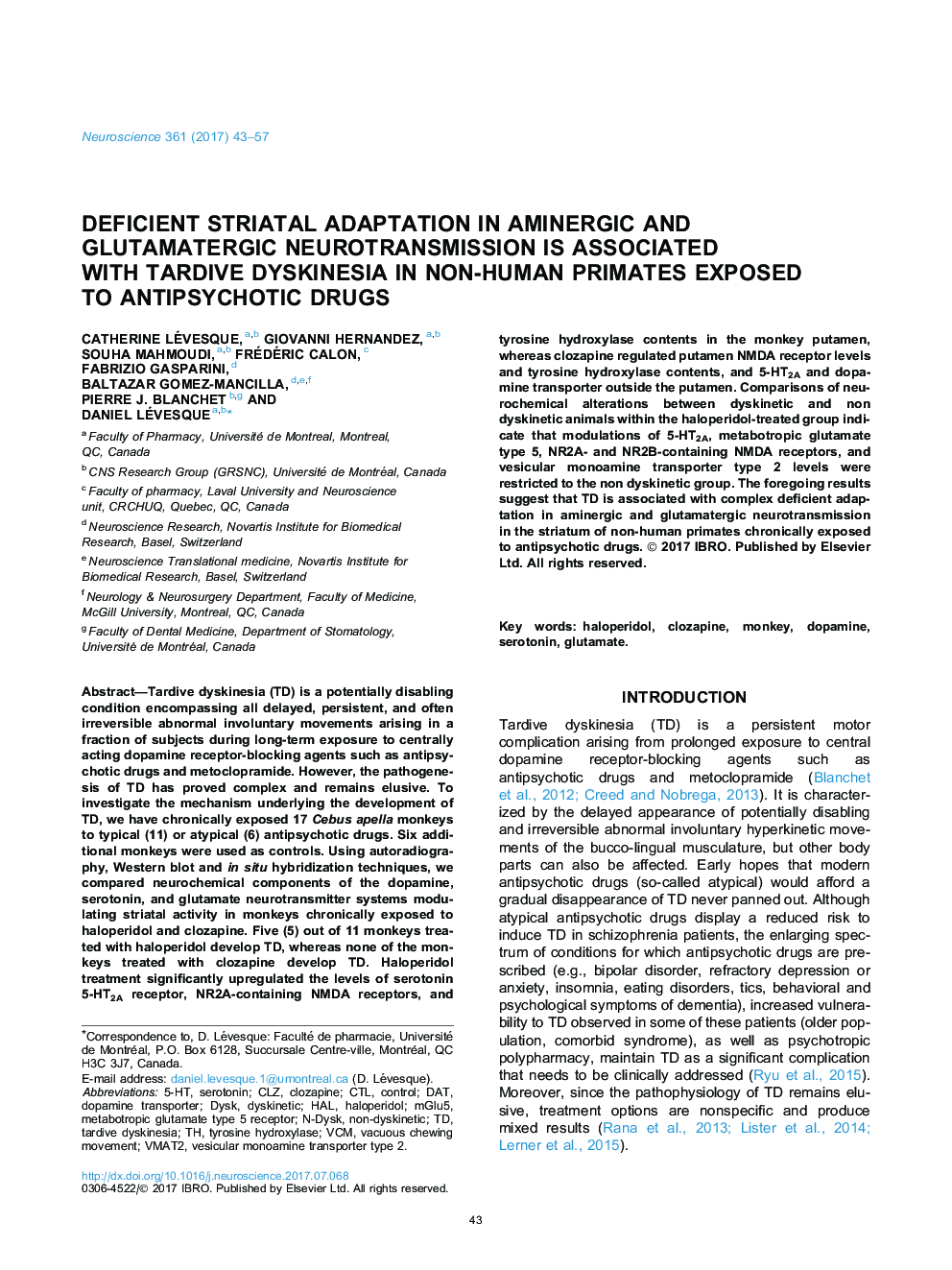| Article ID | Journal | Published Year | Pages | File Type |
|---|---|---|---|---|
| 5737380 | Neuroscience | 2017 | 15 Pages |
â¢Tardive dyskinesia development induced by haloperidol in non-human primates.â¢Tardive dyskinesia is associated with reduced neurochemical adaptation in serotonin 5-HT2A receptor levels.â¢Tardive dyskinesia is associated with an altered neurochemical adaptation in glutamatergic receptor subtypes.â¢Haloperidol-induced neurochemical changes are mainly observed in non-dyskinetic monkeys.
Tardive dyskinesia (TD) is a potentially disabling condition encompassing all delayed, persistent, and often irreversible abnormal involuntary movements arising in a fraction of subjects during long-term exposure to centrally acting dopamine receptor-blocking agents such as antipsychotic drugs and metoclopramide. However, the pathogenesis of TD has proved complex and remains elusive. To investigate the mechanism underlying the development of TD, we have chronically exposed 17 Cebus apella monkeys to typical (11) or atypical (6) antipsychotic drugs. Six additional monkeys were used as controls. Using autoradiography, Western blot and in situ hybridization techniques, we compared neurochemical components of the dopamine, serotonin, and glutamate neurotransmitter systems modulating striatal activity in monkeys chronically exposed to haloperidol and clozapine. Five (5) out of 11 monkeys treated with haloperidol develop TD, whereas none of the monkeys treated with clozapine develop TD. Haloperidol treatment significantly upregulated the levels of serotonin 5-HT2A receptor, NR2A-containing NMDA receptors, and tyrosine hydroxylase contents in the monkey putamen, whereas clozapine regulated putamen NMDA receptor levels and tyrosine hydroxylase contents, and 5-HT2A and dopamine transporter outside the putamen. Comparisons of neurochemical alterations between dyskinetic and non dyskinetic animals within the haloperidol-treated group indicate that modulations of 5-HT2A, metabotropic glutamate type 5, NR2A- and NR2B-containing NMDA receptors, and vesicular monoamine transporter type 2 levels were restricted to the non dyskinetic group. The foregoing results suggest that TD is associated with complex deficient adaptation in aminergic and glutamatergic neurotransmission in the striatum of non-human primates chronically exposed to antipsychotic drugs.
